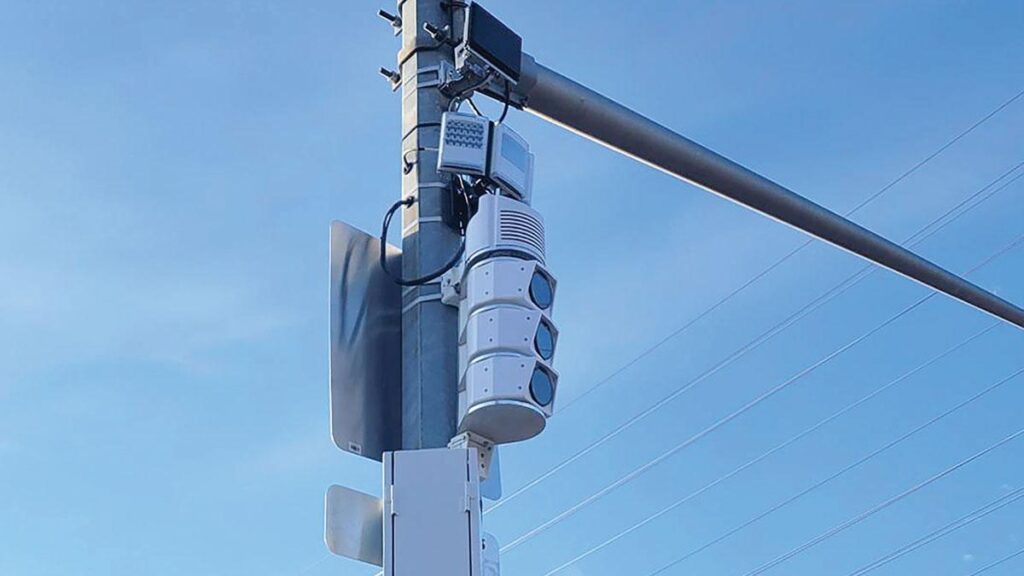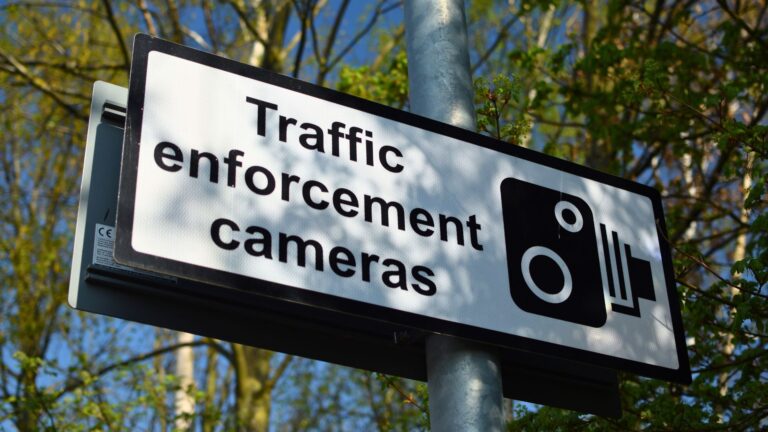Automated Traffic Enforcement (ATE) is increasingly recognized as a key tool in reducing road fatalities, deterring dangerous driving behaviors, and advancing Vision Zero goals. However, deployment and effectiveness still vary widely across North America, largely due to differences in state and provincial legislation.
In this blog we explore how legislation enables or limits ATE use in the U.S. and Canada, the road safety outcomes in regions with strong legislative backing, and how North America compares to Europe’s more unified approach.
Legislative Patchwork in the U.S.
Unlike Europe, the U.S. lacks federal laws governing automated enforcement. Instead, the decision to allow ATE is left up to individual states, resulting in a legislative patchwork:
States With Established ATE Laws:
- Maryland: One of the most comprehensive programs. School zone speed cameras are legal statewide. The school zone speed enforcement has led to measurable safety improvements, including a 39% reduction in the likelihood of drivers exceeding the speed limit by more than 10 mph and significant crash reductions in designated corridors.
- Illinois: Authorized by state legislation, Illinois uses automated speed enforcement vans in designated work zones to improve safety for both motorists and road crews. The program, active since 2006, deploys mobile units along high-risk corridors during construction. According to the Illinois Department of Transportation, these vans have reduced the share of speeding vehicles in work zones from 30–40% to just 6–8%, and helped reduce worker fatalities by over 60% .
- Delaware: Delaware operates one of the most established work zone speed enforcement programs in the U.S. through its Electronic Speed Safety Program. Initiated by legislation, the program uses portable automated speed enforcement units in active construction zones along major highways. Since implementation in 2022, the program has led to an up to 12% reduction in average vehicle speeds and an improvement in worker and road user safety, with a 46% decrease in total crashes and 38% reduction in injury crashes (compared to the same construction period in 2021.)

How Legislation Drives Results
Crash and Injury Trends in Legislated vs. Non-Legislated States
Research increasingly proves that states that support automated traffic enforcement see consistently better traffic safety outcomes. Studies show red-light cameras cut injury crashes by up to 29% and reduce dangerous right-angle collisions, while speed cameras slash serious or fatal crashes by as much as 44%. In New York City, speeding violations dropped 72% after expanding its speed camera programs — clear evidence these tools cause a lasting in driver behavior.
On the flip side, states that banned ATE often saw safety gains disappear. After red-light cameras were removed, fatal crashes increase by 16% in 19 U.S. cities. Texas saw a 30% spike in fatal red-light running crashes post-ban. These numbers speak volumes: when enforcement becomes less visible and predictable, risky driving resurges.
These trends highlight that ATE not only improves compliance and deters reckless driving but that its removal can reverse hard-won safety gains. Jurisdictions lacking ATE often rely on traditional, more expensive and less consistent enforcement methods, missing out on the scalable, unbiased benefits of automated systems.
🇨🇦 ATE Legislative Framework in Canada
Canada delegates traffic enforcement authority to its provinces, but legislation enabling ATE is generally more consistent and finds overall stronger public support than in the U.S.
In Ontario, municipalities can implement automated speed enforcement in school and community safety zones under a province-wide framework. Toronto, which operates over 200 speed cameras, has seen a 59% decrease in repeat speeding violations as of 2022. The Local Authority Services (LAS) program further streamlines procurement and compliance support, helping smaller municipalities in Ontario such as Barrie, Innisfil and Parry Sound deploy ATE efficiently and legally.
Alberta has long used photo radar and intersection cameras extensively. A provincial review found that, when deployed transparently and with community input, ATE led to a 5.3% drop in fatal crash rates, with certain enforcement zones seeing up to 51% fewer collisions. Edmonton reported a 20% decrease in crashes at sites targeted with mobile photo enforcement, while intersections with both red-light and speed cameras saw 32% fewer severe crashes.
Long standing Manitoba photo enforcement programs, including intersection cameras and mobile radar in Winnipeg, have delivered solid results. A 2011 Traffic Injury Research Foundation (TIRF) evaluation found that intersection cameras led to a 46% reduction in right-angle crashes following the implementation of the program. Mobile units deployed in school, playground, and construction zones further support speed compliance across the city. Public acceptance was also positive, with over 80% believing the program increased awareness of speeding issues and 71% supporting its continuation
The European Example: Why a Unified Legal Framework Works
In contrast to North America, Europe benefits from an overarching regulatory philosophy. While individual countries manage enforcement, there is strong guidance from EU bodies around:
- Data privacy and interoperability
- Consistent signage and camera placement standards
- Cross-border enforcement agreements (e.g., issuing fines across EU states)
For example:
- France: Speed camera deployment contributed to a 50% drop in road deaths over 20 years.
- Sweden: Combines enforcement with Vision Zero strategy, and has one of the lowest road fatality rates globally.
- Cyprus: Following the launch of a national ATE program in 2021, Cyprus reported a 24% decrease in road deaths and a 31% drop in serious injuries in the first full year of implementation, highlighting how centralized planning and monitoring can deliver immediate safety benefits.
A unified strategy allows Europe to deploy ATE widely, without the fragmented rollout that slows down or even hinders North American progress.

Future Outlook: A Case for Legislative Consistency
To fully realize the public safety potential of automated traffic enforcement, North America would benefit from:
- Model state/provincial legislation with standards on privacy, deployment, and penalties
- Greater public transparency to build trust (dashboards, regular audits)
- Federal or interprovincial coordination to reduce gaps and increase impact
While cultural and legal differences exist, the European model shows that consistency breeds effectiveness. With lives on the line, aligning legislation with proven safety tools like ATE is a goal worth prioritizing.
Elovate partners with public agencies all across North America, as well as the Republic of Cyprus to design automated traffic enforcement (ATE) programs that are effective, compliant, and rooted in a community-first approach. Guided by our mission to improve public safety through innovation and collaboration, we help municipalities implement smart enforcement solutions tailored to local needs. Learn more at elovate.com.






